 Indian FTR 1200 - Owner's Manual > Engine Break-in
Indian FTR 1200 - Owner's Manual > Engine Break-in
The engine break-in period for your motorcycle is the first 500 miles (800 km) of operation. During this break-in period, critical engine parts require special wear-in procedures so they seat and mate properly. Read, understand and follow all break-in procedures to ensure the long-term performance and durability of your engine.
The more cautiously you treat your motorcycle during the break-in period, the more satisfied you will be with its performance later on. Overloading the engine at low RPM and/or running the engine prematurely at high RPM may result in damage to the engine components.
Observe the following precautions during the break-in period:
- Upon initial start-up, do not allow the engine to idle for long periods as overheating can occur.
- Avoid fast starts with wide open throttle. Drive slowly until the engine warms up.
- Avoid running the engine at extremely low RPM in higher gears (lugging the engine).
- Drive within the recommended operating speeds and gears.
OPERATING SPEEDS AND GEARS

FUELING
Always dismount the motorcycle and refuel on level ground with the sidestand down. Review the fuel warnings. Use only the recommended fuel.
WARNING Overflows or spilled gasoline could contact a hot engine or exhaust system and cause a fire, which could result in serious injury or death. Do not allow gasoline to contact hot components.
WARNING Always open the fuel cap slowly and fill the fuel tank slowly to prevent spillage. Do not overfill the fuel tank. Leave space in the tank to allow for the fuel to expand.

1. To open the fuel tank cap 1, insert the ignition key into the cap lock and turn it counter-clockwise.
2. Insert the fuel nozzle into the fuel tank filler neck.
3. Hold the nozzle while filling. Do not rest the weight of the nozzle and hose on the filler neck. Do not leave the nozzle unattended.
4. Add fuel to the tank until it crests the oval-shaped opening in the filler neck. The tank is full at this level. Do not overfill the fuel tank. Fuel level should not rise into fill neck funnel.
Overfilling may result in degraded performance of engine and evaporative emissions control system.
5. Always close and lock the fuel cap before remounting the motorcycle. With the key rotated counter-clockwise, close the fuel cap with your opposite hand and press it down firmly. Turn the key clockwise to secure the lock.
6. If the motorcycle runs out of fuel, prime the system before attempting to restart the engine.
NOTICE Fuel can damage painted surfaces and plastic parts. If gasoline spills on the any part of the motorcycle, immediately rinse it off with water or wipe it dry with a clean cloth.
PRIMING THE FUEL SYSTEM
If the motorcycle runs out of fuel, prime the fuel system before attempting to restart the engine.
1. Fill the fuel tank.
2. Turn the ignition key to the ON position.
3. Move the engine stop/run switch to the RUN position.
4. Allow the fuel pump to run until it stops (about 2 seconds).
5. Move the engine stop/run switch to the STOP position and wait 15 seconds.
6. Repeat steps 3-5 four to five times.
7. Turn the key to the OFF position.
8. Start the engine.
STARTING THE ENGINE
The starter interlock system allows the engine to be started only when the transmission is in neutral, or when the transmission is in gear with the clutch disengaged (clutch lever pulled in).
1. Perform the Pre-Ride Inspections. Properly secure any cargo.
2. Straddle the motorcycle and bring it to the fully upright position. Retract the sidestand.
3. Turn the ignition key to the ON position.
4. Move the engine stop/run switch to the RUN position.
5. Shift the transmission to neutral.
6. Apply the front brakes. Disengage the clutch (pull the clutch lever fully toward the handlebar).
7. Press and release the starter switch to start the engine. The starter motor will crank until the engine starts, but no more than 3 seconds. If the engine does not start, wait five seconds, then try again.
8. If starting a COOL engine, DO NOT open the throttle while starting. Idle speed is computer controlled and will adjust automatically. Allow the engine to warm up for 30 seconds minimum at low RPM after starting. Do not run the engine above 2500 RPM. If starting a WARM engine, DO NOT open the throttle while starting.
9. If either the check engine indicator or the low oil pressure indicator remains on after the engine starts, stop the engine immediately. Refer to the low oil pressure indicator information.
NOTICE Operating an engine with a misfire or non-firing cylinder can overheat the catalytic converter, which could result in catalytic converter damage and loss of emission control. DO NOT OPERATE the motorcycle if a misfire or non-firing cylinder exists.
10. Leave the throttle closed and allow the engine to idle. Idle speed will gradually slow to normal as the engine warms to operating temperature.
TIP Do not rev the engine or put the transmission in gear immediately after starting the engine. Allow the engine to idle for about 30 seconds after a warm start or at least one minute after a cold start (longer in cold weather). This will allow oil to reach all areas before the engine is put under load.
NOTICE Do not run the engine at high RPM with the clutch disengaged or the transmission in neutral. Maximum safe engine speed is 8300 RPM. Never exceed the maximum safe RPM as this could result in serious engine damage.
MISFIRE DETECTION
If a misfire is detected, the check engine indicator lamp will begin to flash and fuel will be cut to the affected cylinder(s). The check engine indicator lamp will continue to flash until the ignition switch has been moved to the off position. Restarting the engine will clear the flashing indicator and restore fuel to both cylinders. If another misfire occurs, the check engine indicator lamp will resume flashing and fuel will once again be cut to the affected cylinder(s).
After the 3rd misfire, P0314 misfire fault is determined & set, the check engine light will remain on and fuel will be cut to the affected cylinder(s). If this occurs, your INDIAN dealer can assist.
See also:
 Indian FTR 1200 - Owner's Manual > Operation
Indian FTR 1200 - Owner's Manual > Operation
The operation section of this manual describes how to ensure maximum performance and longevity through the proper care and operation of your motorcycle. Important areas covered by the operation section include: Engine Break-In Fueling Starting the Engine Shifting Gears Accelerating Braking Stopping the Engine Parking
 Indian FTR 1200 - Owner's Manual > Shifting Gears
Indian FTR 1200 - Owner's Manual > Shifting Gears
WARNING Forced shifting (with clutch engaged) could cause damage to the engine, transmission and drive train. Such damage could cause loss of control, which could result in serious injury or death.
 Ducati Scrambler
Ducati Scrambler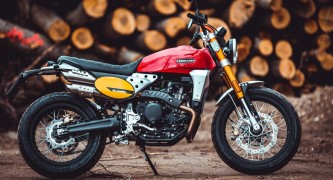 Fantic Caballero 500
Fantic Caballero 500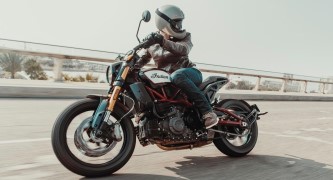 Indian FTR 1200
Indian FTR 1200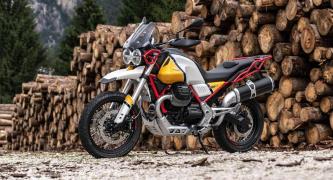 Moto Guzzi V85 TT
Moto Guzzi V85 TT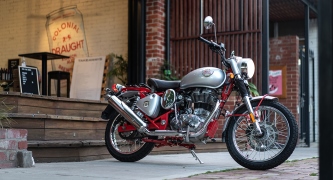 Royal Enfield Bullet Trials Works Replica
Royal Enfield Bullet Trials Works Replica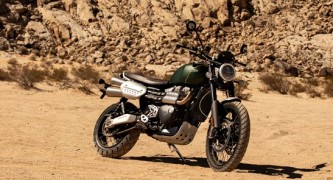 Triumph Scrambler 1200 XE
Triumph Scrambler 1200 XE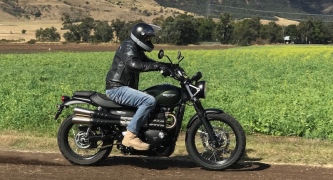 Triumph Street Scrambler
Triumph Street Scrambler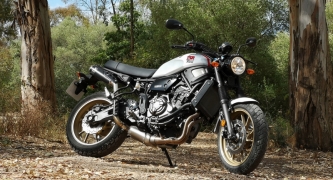 Yamaha XSR700
Yamaha XSR700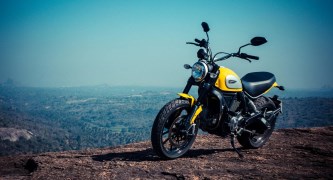 Ducati Scrambler 800
Ducati Scrambler 800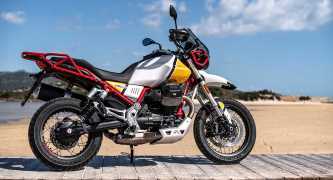 Moto Guzzi V85 TT
Moto Guzzi V85 TT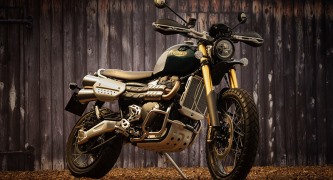 Triumph Scrambler 1200 XC
Triumph Scrambler 1200 XC